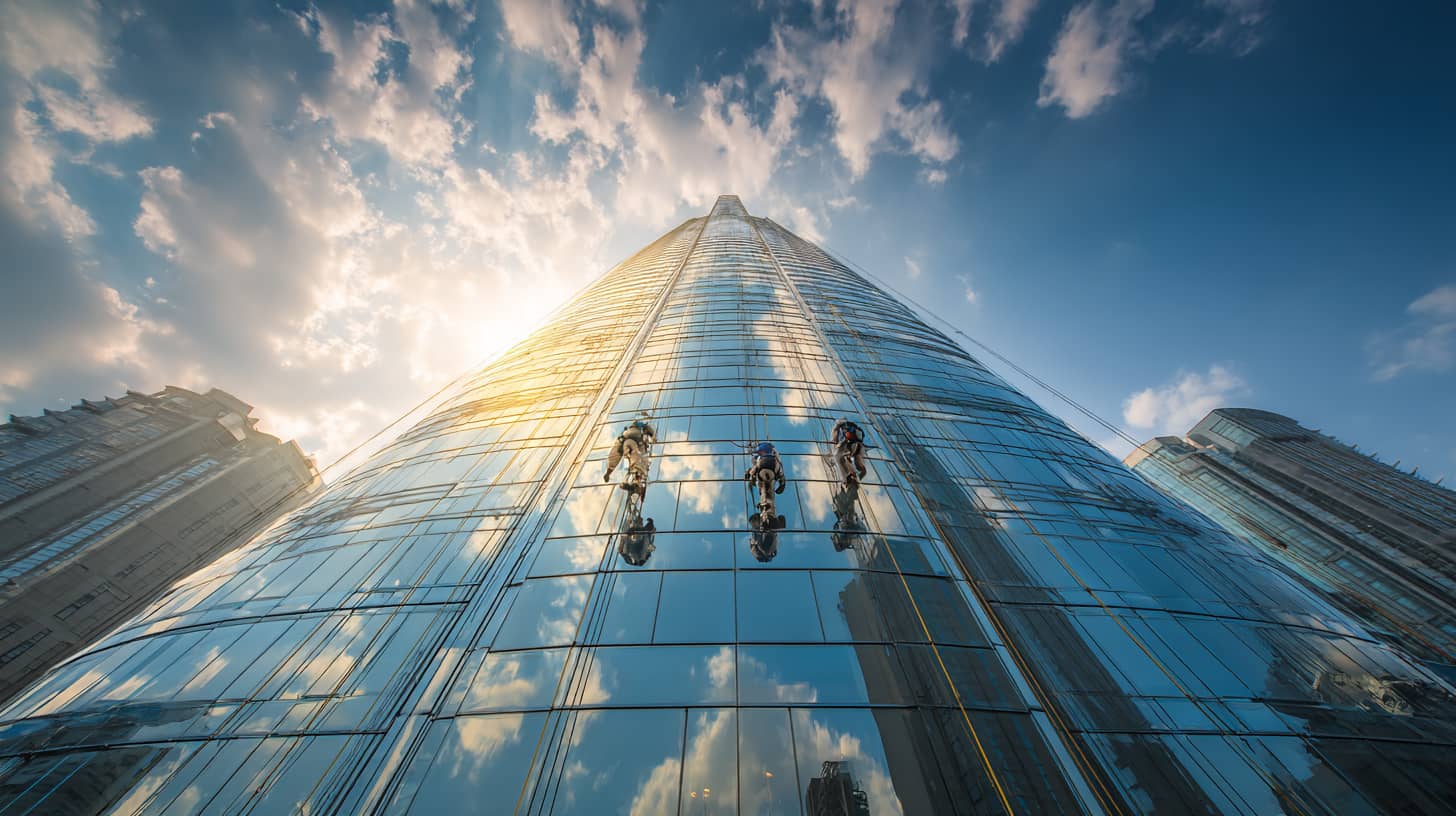How does the world's tallest tower survive extreme weather conditions?
830 meters above sea level, where temperatures fluctuate between minus 10 and plus 50 degrees Celsius, winds whip with hurricane force and UV radiation strikes relentlessly - this is where the facade coating of the Burj Khalifa has to withstand day after day. What other high-rise surface protection systems have to achieve in years, this coating has been doing for over a decade.
Why do normal building coatings fail at extreme heights?
Physics knows no compromises. From 200 meters upwards, the rules of the game for surface protection change drastically. Temperature fluctuations become more extreme, wind loads increase exponentially and UV radiation reaches intensities that would destroy coatings close to the earth within months.
Conventional façade coating service solutions capitulate under these conditions. Cracks occur due to thermal expansion, color fades due to UV bombardment, and wind forces detach poorly adhering layers. The result: costly renovation cycles every two to three years.
Innovation through multi-layer surface systems
The solution lies in revolutionary coating system planning. Instead of a single protective layer, the Burj Khalifa uses a complex multi-layer system. Each layer fulfills specific functions: Corrosion protection, UV resistance, thermal stability and aesthetic perfection.
Certified coaters rely on Polyurethane Coating Expert technology in combination with ceramic particles. This nano technology reflects up to 95 percent of solar radiation and at the same time reduces the surface temperature by up to 15 degrees.
Quality control at world record level
How do you ensure that coatings work perfectly at an altitude of 830 meters? Through rigorous surface testing service provider standards that go far beyond normal industry norms.
Every square meter is documented, analyzed and certified. Coating thickness measurement Service is carried out with precision instruments that detect deviations in the micrometer range. Adhesion test Service providers test the bond between substrate and coating under simulated extreme conditions.
Maintenance strategies for unattainable heights
How do you maintain surfaces that are higher than most clouds? Coating maintenance service at extreme heights requires innovative approaches. Specialized climbing technicians work with state-of-the-art safety equipment at wind speeds that would force ground workers to quit long ago.
Maintenance intervals are strategically planned. Surface analysis service identifies potential problem areas before visible damage occurs. Preventive paint damage repair service prevents costly major renovations.
Technology transfer for terrestrial applications
What works at a height of 830 metres is also revolutionizing applications close to the earth. Power plant surface protection, wind turbine coating and highway bridge coating benefit from technologies developed at the Burj Khalifa.
Industrial coatings for chemical plant coating or pipeline coating services use similar multi-layer concepts. The challenges may be different, but the solutions are universally applicable.
Investment in the future
High-rise coatings to Burj Khalifa standard cost more than standard solutions - but pay off in the long term. Reduced maintenance costs, extended renovation cycles and improved value retention amortize the investment within a few years.
Professional coating companies with experience in extreme applications understand these relationships. They develop customized solutions that meet specific requirements while remaining economically viable.
The Burj Khalifa proves it: With the right surface technology, even the most extreme challenges can be mastered.
